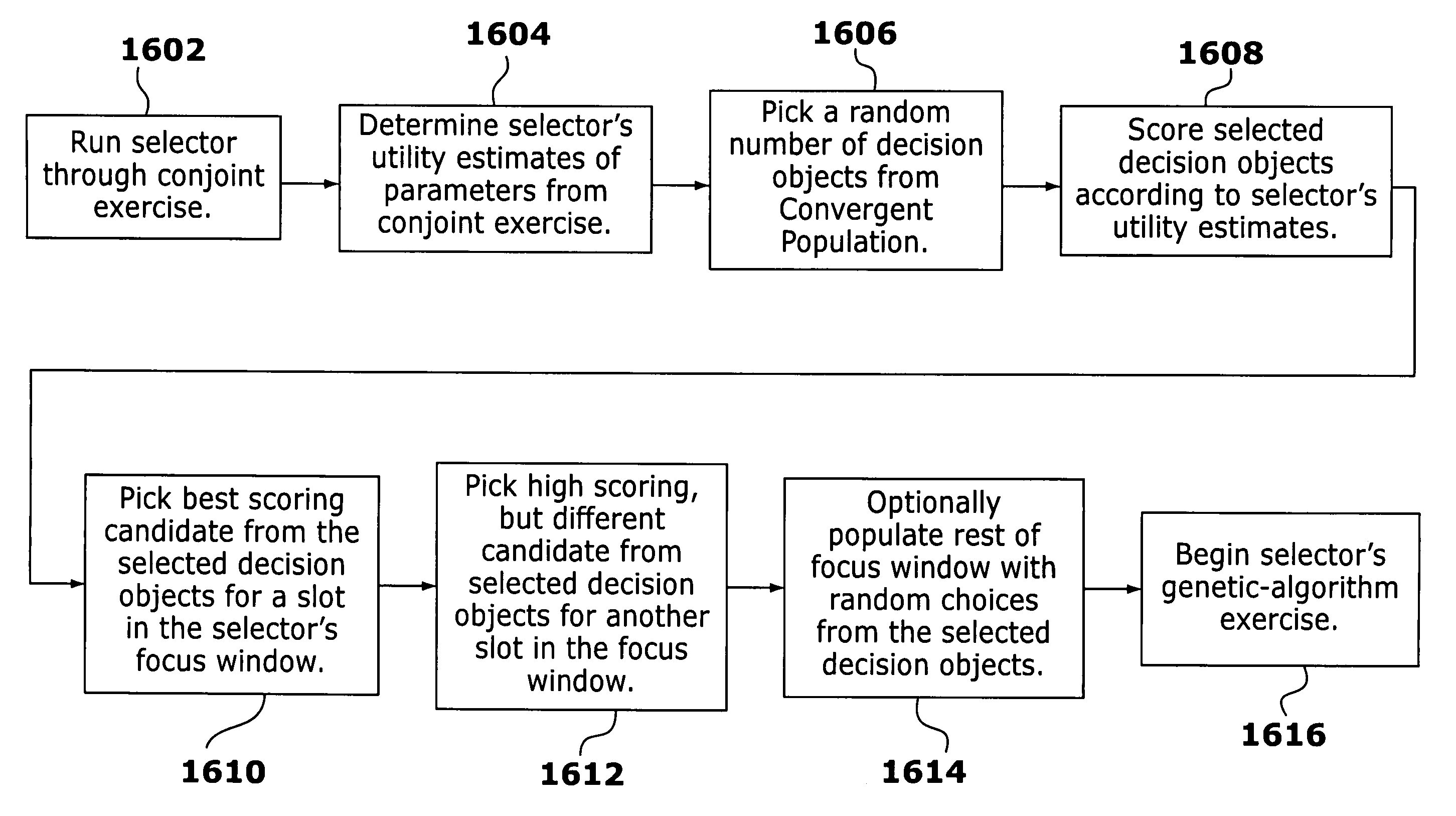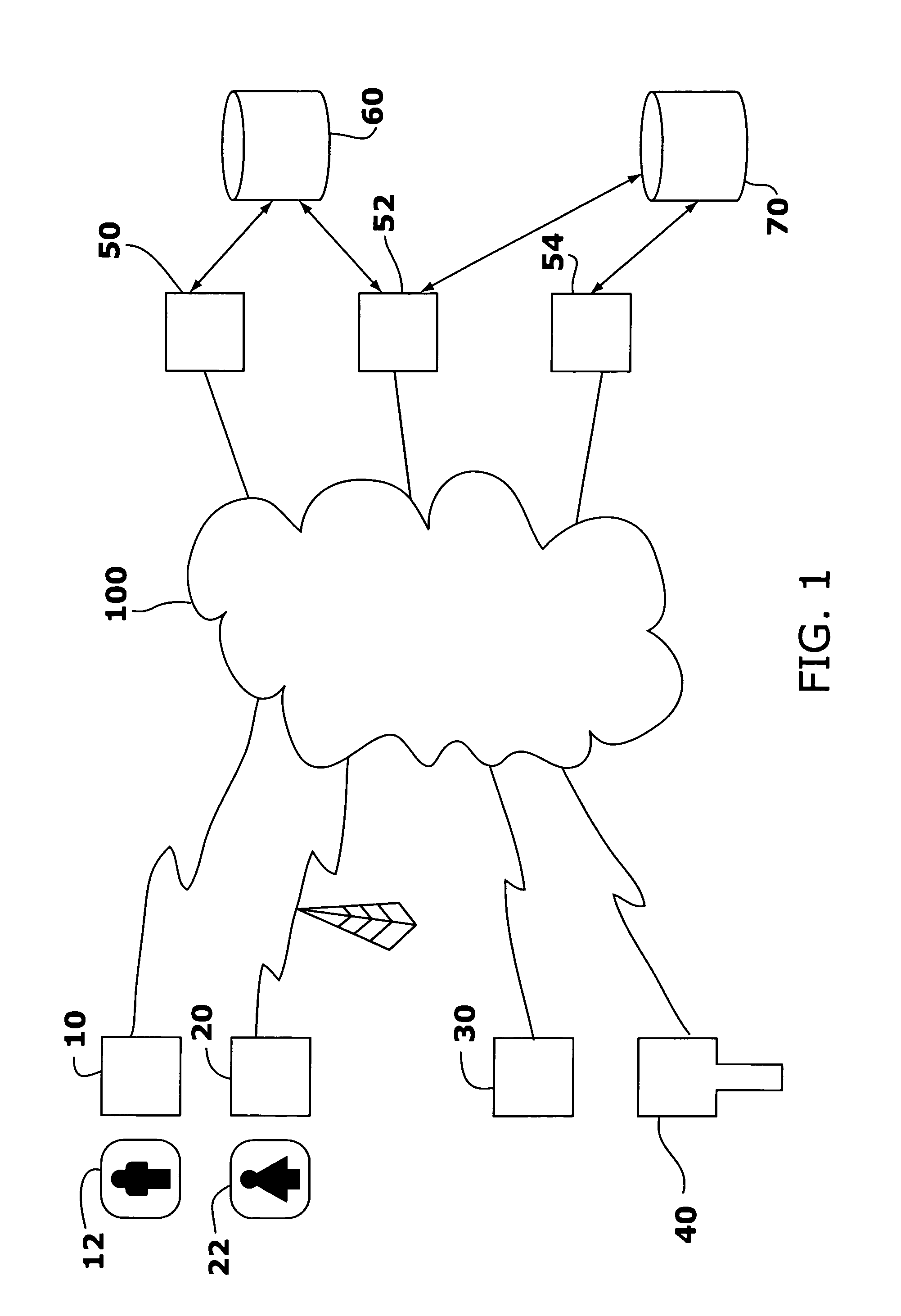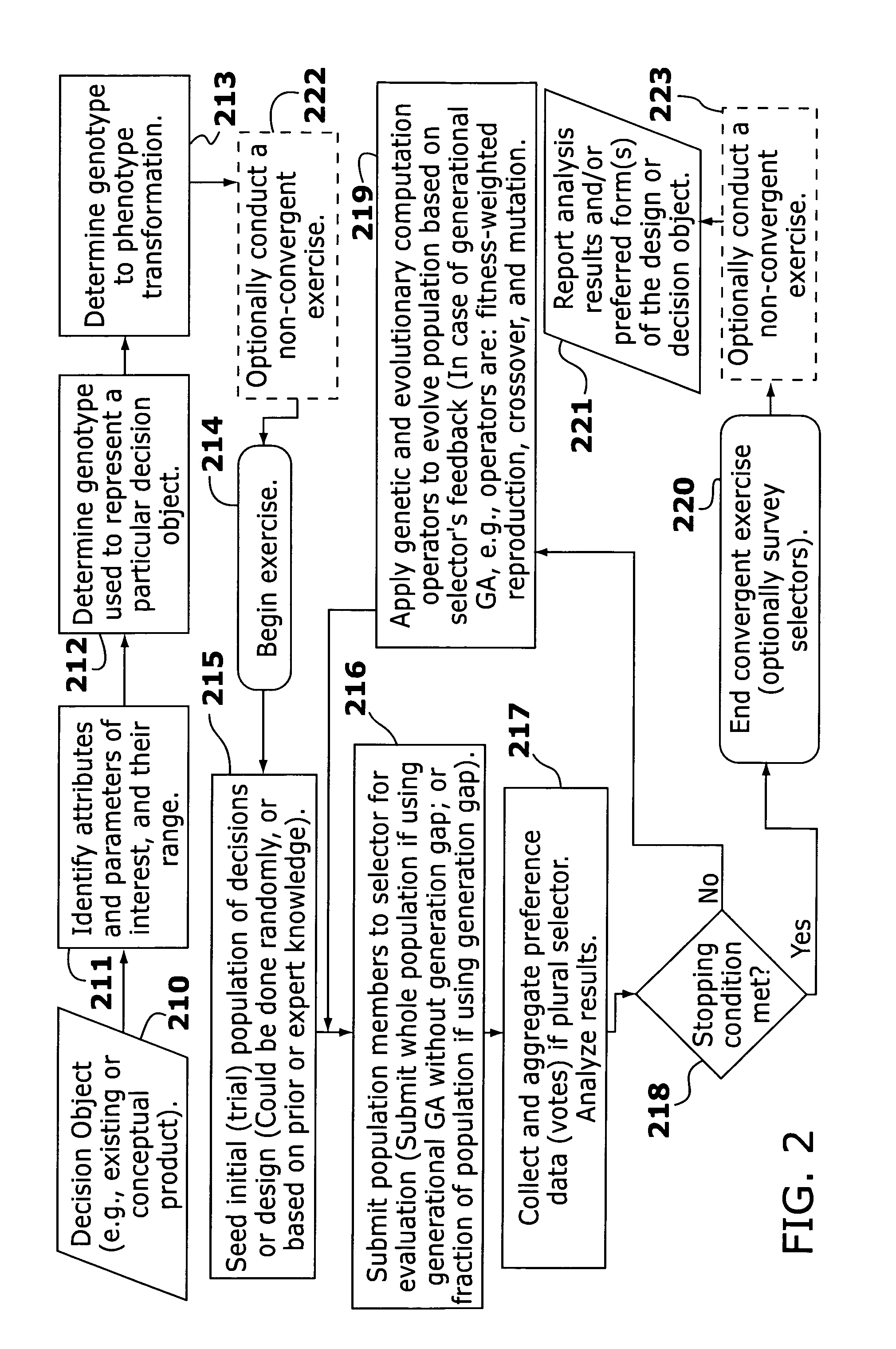Determining design preferences of a group
a design preference and group technology, applied in the field of determining design preferences of a group, can solve the problems of finding participants who do not know one another, biasing the discussion, and remaining fraught with errors and potential distortions, and achieves the effect of efficient analysis of design preference tendencies and easy recruitmen
- Summary
- Abstract
- Description
- Claims
- Application Information
AI Technical Summary
Benefits of technology
Problems solved by technology
Method used
Image
Examples
Embodiment Construction
[0079]In brief overview, the claimed invention provides methods of efficiently analyzing selectors' design preference tendencies from among various design alternatives for decision objects and their attributes. The methods may be used to gather rich datasets informative of the preferences of any given target group, to discern which attributes of a product or service are important or unimportant to the selectors, and to reveal preferred product forms faithfully and without bias. The methods are implemented electronically and typically asynchronously over a relatively short time period. They may be designed to meet any set of design or market research objectives, and to obtain data relevant to any specific design issues considered relevant to any type of product. Advantageously, the methods make use of both convergent exercises and non-convergent exercises to obtain a wide variety of preferential information from the selectors.
[0080]FIG. 1 shows one embodiment of an environment in whi...
PUM
 Login to View More
Login to View More Abstract
Description
Claims
Application Information
 Login to View More
Login to View More - R&D
- Intellectual Property
- Life Sciences
- Materials
- Tech Scout
- Unparalleled Data Quality
- Higher Quality Content
- 60% Fewer Hallucinations
Browse by: Latest US Patents, China's latest patents, Technical Efficacy Thesaurus, Application Domain, Technology Topic, Popular Technical Reports.
© 2025 PatSnap. All rights reserved.Legal|Privacy policy|Modern Slavery Act Transparency Statement|Sitemap|About US| Contact US: help@patsnap.com



